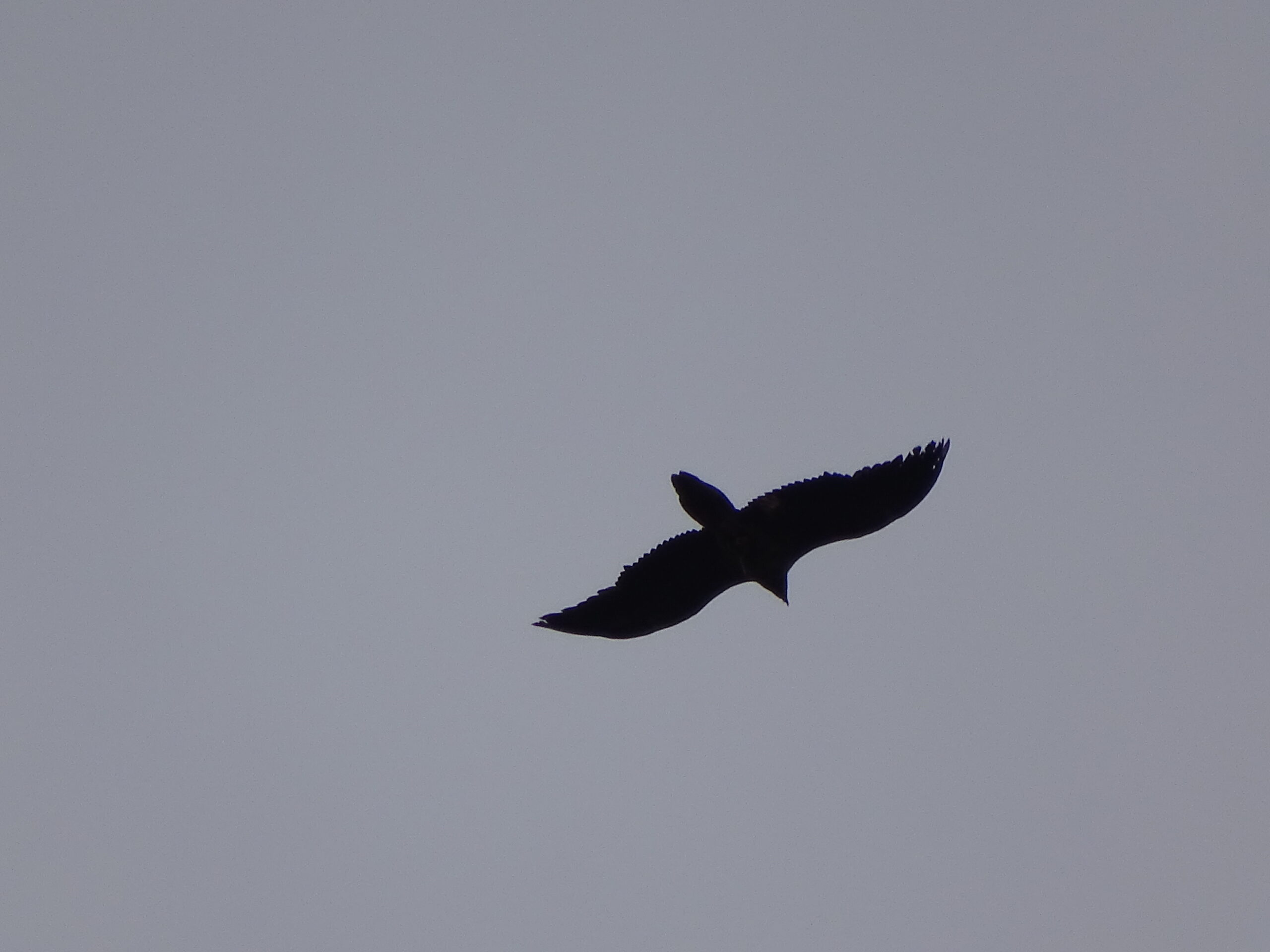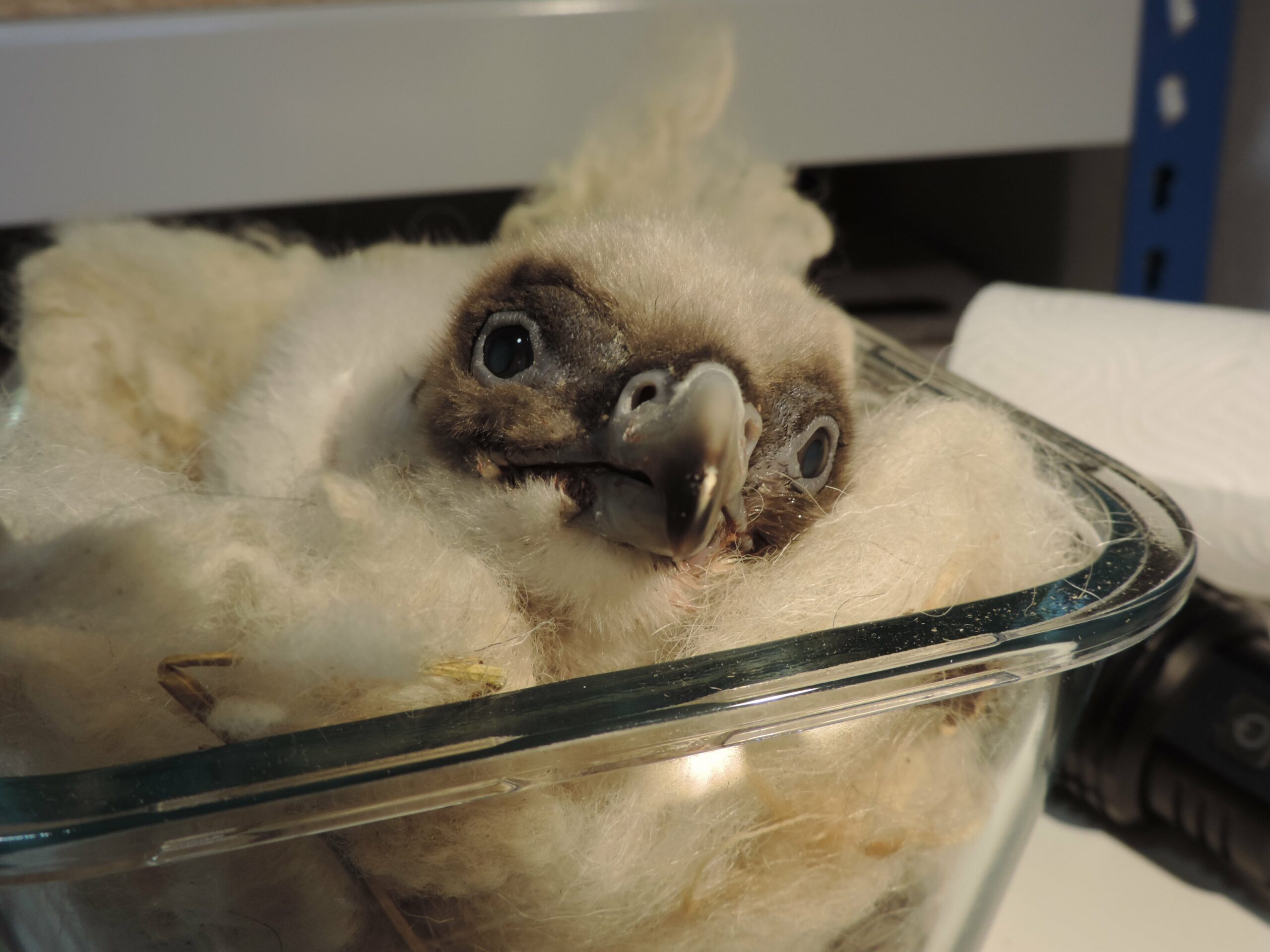The first wild bearded vulture nestling tagged in the French pre-Pyrenees flew off from its nest, most probably on the 20th May. Already on the 16th May the young bearded vulture was very active, flapping its wings and jumping. On the 21th May its mother was seen feeding him on a grassy platform under the nest (see photo), while a few days later the young had a close encounter with a local breeding peregrine pair (see photo).
Roc Genèse – named after a climbing club that has collaborated in the operation – was tagged a few weeks ago in its nest in the Aude, in the French eastern pre-Pyrenees, as part of the LIFE GYPCONNECT project. The nestling hatched in the easternmost known Pyrenean nest, therefore the closest to the Massif Central, where a reintroduction project is being implemented by the VCF, LPO and other partners.
Led by the League pour la Protection des Oiseaux (LPO), in partnership with the VCF, Vautours en Baronnies, Centre National d’ Informations Toxicologiques Vétérinaires, Electricité Réseau Distribution France, Parc National des Cévennes, Parc Naturel Régional du Vercors, LPO Aude, and the Université Pierre et Marie Curie – Paris 6, the LIFE GYPCONNECT project aims to establish a breeding population of bearded vultures in the Massif Central, as well as in the Pre-Alps, through reintroduction, and promoting dispersal movements between the Alps and the Pyrenean populations.
This year 4 young bearded vultures will be released in the project area, two in the Grands Causses (released last week) and two in Baronnies later this week – the first time that bearded vultures will be released in the latter region. The project also includes the establishment of supplementary feeding points to try to attract bearded vultures from the Pyrenees to cross the Aude valley.
We hope to monitor Roc Genèse´s dispersal and see where it will end up – we hope it will eventually fly east! At the same time two ringers from the Pyrenees received training on putting tags on bearded vultures, as similar actions are planned for the future for other parts of the Pyrenees as part of the French national species action plan.
The LIFE GYPCONNECT project is part of the VCF strategy to restore the species in western Europe, now that the Alpine population is firmly re-established – 34 pairs in 2015 and a record 20 fledglings, and with the first breeding in the wild in Andalucía happening also last year (following extinction there in the 80s, and the start of the reintroduction project 10 years ago), this project aims to promote movements of the species between Iberia and the Alps, thus promoting gene flow, which will also help increasing the genetic diversity of the alpine population, and thus accelerate the end of the reintroduction project there.
Photos LPO Aude




